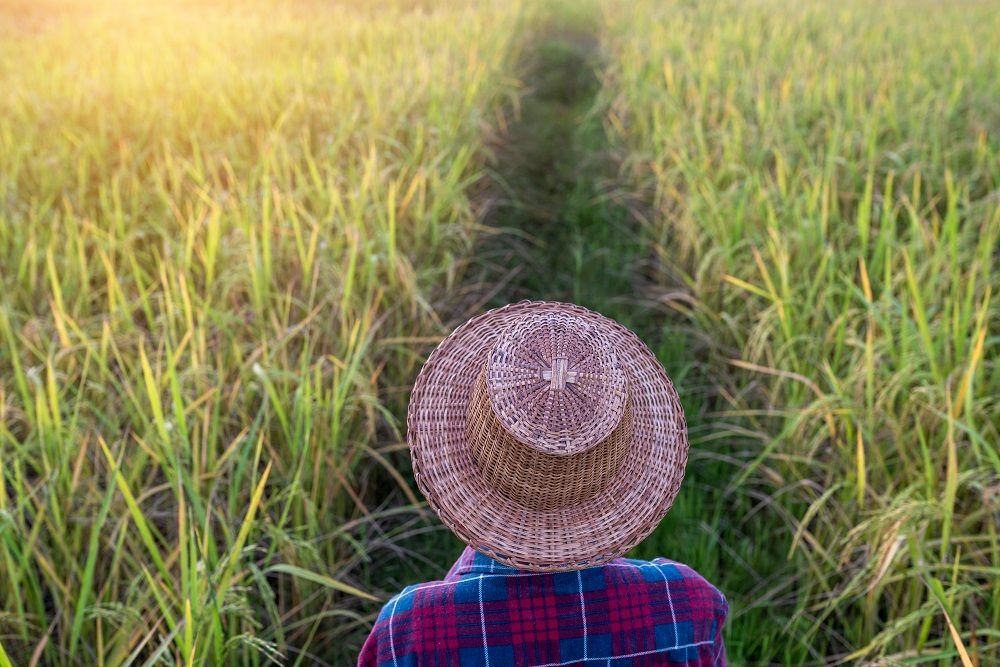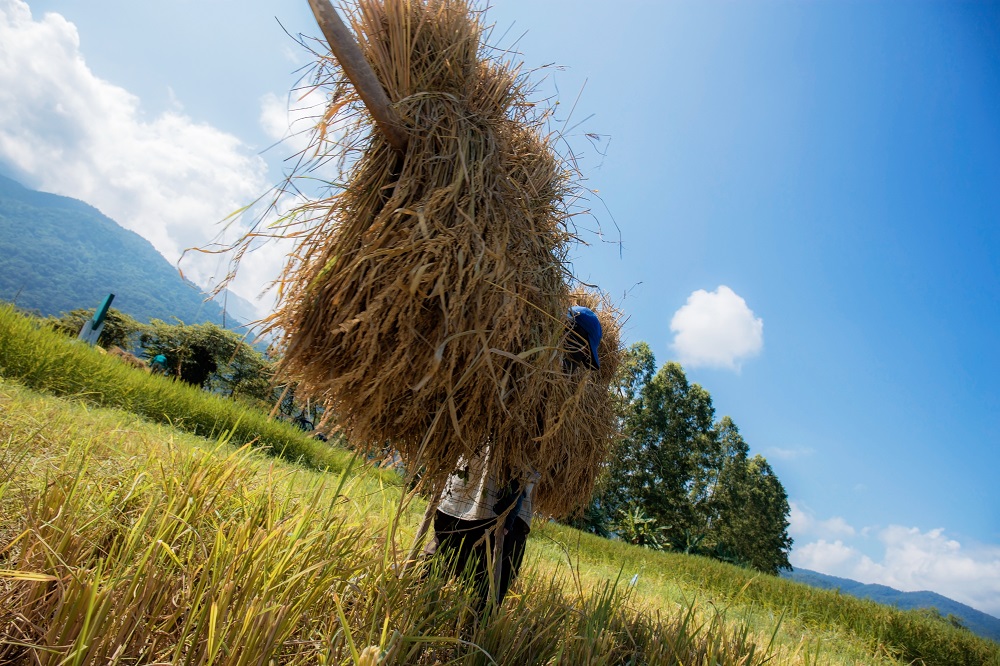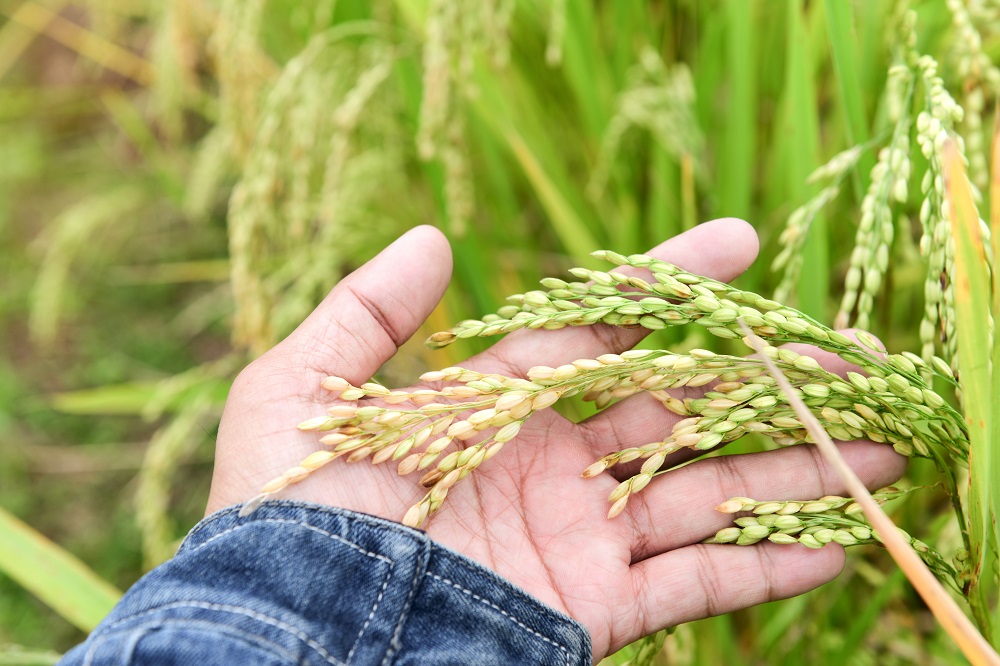Heru’s Journey to Fulfill Rice from Banyuwangi

how to plant rice
(Istimewa)Working as a farmer is often underestimated. Apart from having to work among the dirt, the stigma of farmers not being able to make ends meet is often the reason for many people to choose office jobs that are considered more promising.
However, Heru Rusiyanto, a farmer from Gladak Village, Rogo Jampe District, Banyuwangi, East Java, has a different view. A graduate of the Electrical Engineering Department from the School of Business, Heru has been involved in agriculture since the year 2000, even though this work is not ‘in line’ with his studies. For Heru, agriculture is not a new thing. Since childhood, he has often played in the fields.
“I really like farming because my father introduced me to this world when I was young. Even when I was studying at the Electrical Engineering Department, I often took time off for myself in the rice fields when I was bored from studying,” said Heru.
After graduating from college, Heru worked in a car repair shop for six months. However, the job did not match his passion. Heru also decided to return to his hometown to open an electronic service as well as farming.
Since then, Heru started cultivating horticulture. In fact, he was also appointed as an administrator for a farmer group in Banyuwangi. From then on, Heru knows very well how to farm.
“I focused on learning rice cultivation techniques from the basics to becoming one of the reference farmers. I am also often asked to make analyzes and always record which ones work because I have always liked doing experiments,” he added.
Currently, said Heru, there are more than 100 farmers in his village. But of the many farmers in his village, most of them are older. Heru then invites young people to become farmers.
The Challenge of Becoming a Rice Farmer
Heru is now working as a rice farmer. According to him, planting rice is an easy business to learn. Even by learning once or twice a season, people can immediately cultivate rice plants.

The obstacles in planting rice, said Heru, were pests. But these pests from the past until now have remained the same and can be overcome.
To achieve success as a farmer, continued Heru, is to focus on pursuing this job. In addition, farmers also have to be serious in dealing with pests.
There are many types of pests, but those that usually attack rice plants, are leafhoppers. Leafhoppers are the main enemy of farmers. The reason is that planthoppers can ruin harvests overnight and attack them throughout the rice planting season.
“Some farmers consider themselves a failure. The fact is, they never observed, so they fell into the same hole. Most of our farmers are currently only taking pesticides from fertilizers,” said Heru.
To ward off pest attacks on rice plants, farmers can use pesticides. It’s just that using pesticides will cost a lot of money. In addition, it could also risk damaging the rice plants.
There is an effective way to ward off pests, namely by using environmentally friendly biological agents that can be mixed with pesticides. Biological Agents are natural enemies of microorganisms that can be developed and their starters are already available in agricultural laboratories.
“With training, also from the agriculture agency, we develop it so that it costs less and is more pest-resistant. When sprayed, biological agents can protect our plants throughout the growing season from leafhoppers,” explained Heru.
In addition to overcoming pest problems, to get maximum yields, watering must also be done properly. In one week, watering once or twice is enough. Meanwhile, when rice is exposed to rain, the water in the fields must be drained immediately.
Then, what are the characteristics of ready-to-harvest rice plants? Well, the characteristics of ready-to-harvest rice are that the grains are ripe and yellow up to 90 percent. “If all the rice grain appears yellow or the base is yellow and hard, it means the rice is ready to be harvested,” he continued.
Fertilizer recommendations
Fertilization is very important in growing rice. Therefore, try not to use the wrong fertilizer so that it can yield an abundant harvest.

One of the recommended fertilizers for rice cultivation is NPK Pelangi, produced by PT Pupuk Kalimantan Timur (PKT). NPK Pelangi consists of 2 (two) types, namely NPK Blending and NPK Fusion. The blending type of NPK Pelangi is produced using a mechanical blending process and comes from high-quality raw materials, namely urea granules, DAP (Diammonium Phosphate), and KCL Flakes, as well as fillers in the form of magnesium (Mg) and calcium (Ca), so that the granules are colorful.
Whereas NPK Pelangi type Fusion is produced through a steam granulation process so that it has homogeneous fertilizer granules that contain the elements of nitrogen (N), phosphorus (P), and potassium (K) in one grain. The advantage of NPK Pelangi is that its proportion can be flexible and adapted according to customer needs.
The NPK Pelangi fertilizer can be mixed with urea in a ratio of 3:2. From the trial results using NPK Pelangi, 1 hectare of rice field only requires 4 quintals of fertilizer. Even though it usually can reach up to 5 quintals.
Not only is PKT a producer of quality fertilizers, but they also support capital through the Farmers micro-credit program (KUR Tani) and assist farmers through the Agro Solution program. This program helps farmers to increase their agricultural production.
Heru hopes that Indonesian farmers will soon ‘wake up’ because previously they were lulled by a good life. “Let’s make agriculture better so that the farmers are more prosperous, the land is more fertile, and we can do that when we leave chemical pesticides,” he concluded. (Safaanah)
